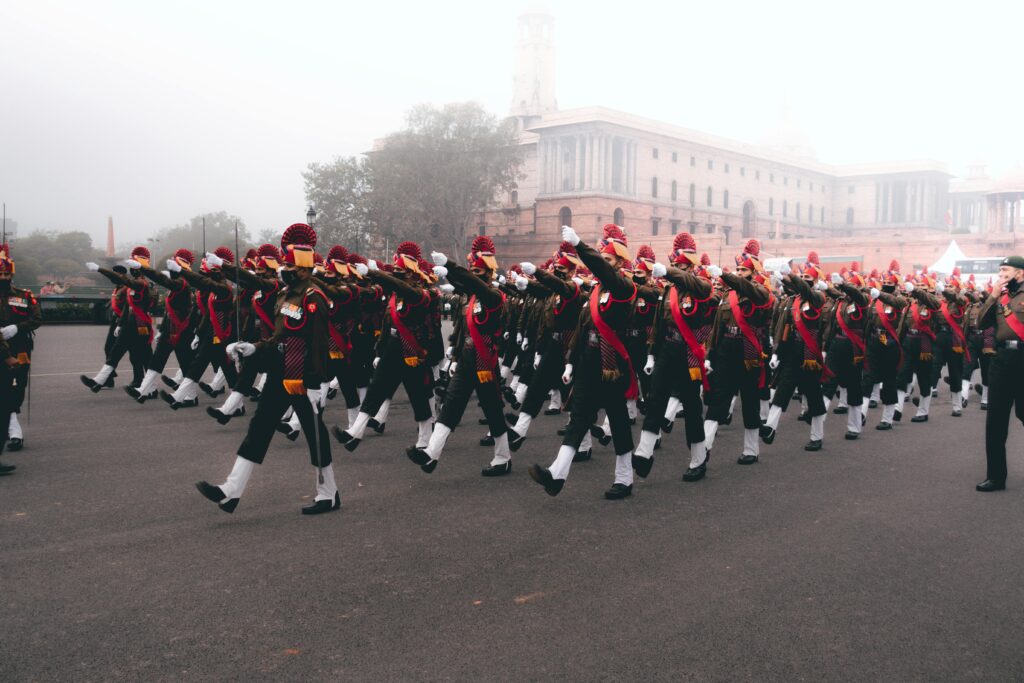India plans to spend approximately $100 billion to modernize its military:
The $100 billion planned for modernizing India’s military will likely be allocated across several domains based on historical trends and stated priorities. This significant investment is part of a strategy to place orders within the local defense sector, covering fighter planes, aircraft, helicopters, submarines, tanks, infantry combat vehicles, electronic warfare systems, missiles, innovative ammunition, rockets, and bombs. There seems to be a strong emphasis on the following areas:

- Aircraft: Including Tejas variants, Twin Engine Deck Based Fighters (TEDBF), Advanced Medium Combat Aircraft (AMCA), transport aircraft like Dornier and Tata Airbus C295, and trainers.
- Uncrewed Aerial Vehicles (UAVs): Includes emerging technologies with shorter development times and quicker deployment.
- Tanks and troop carriers: For land forces.
- Missiles: Short-, medium-, and long-range missiles, including Brahmos and Pralay.
- Submarines and ships: Although specific details regarding submarine acquisitions are not mentioned, some funding may go toward enhancing maritime capabilities.
It’s interesting to note that the Indian government has been making efforts to increase the share of domestic procurement in the military’s capital expenditure. In fact, it has reached 75% in the latest budget. This move reflects the government’s commitment to boost the domestic defense industry and reduce dependence on imported arms.
The Defense Minister highlighted the need for India to take bold steps to become a defense superpower to propel the nation towards becoming one of the world’s leading economic powers by the end of ‘Amrit Kaal.’ This vision underscores a strategic focus on strengthening India’s defense capabilities to drive economic growth and elevate its global standing. It also indicates that “orders worth over $100 billion” would be placed through the local defense sector over the next 5-10 years. The government prioritizes adequate empowerment of the armed forces to meet any operational requirement. Two main strategies are utilized for this:
- Induction of New Equipment: Acquiring new platforms, technologies, and weapon systems to enhance the armed forces’ capabilities.
- Technological Upgradation of Capabilities: Upgrading existing equipment and systems to improve performance and effectiveness.
- The government recognizes that the security landscape constantly evolves, and new threats and challenges emerge regularly. Therefore, equipping the armed forces is an ongoing process that requires continuous modernization and upgradation of capabilities, which needs continuing investment and adaptation to keep the armed forces in a state of readiness to meet the ever-changing security challenges.
A World Bank estimate also placed the value of Indian procurement markets at $100 billion, representing over 20 percent of India’s Gross Domestic Product (GDP). This underscores the significant economic impact and scale of government procurement activities in India. The issuance of the Public Procurement ‘Make in India’ order, 2017 is aligned with the policy objectives of the Government of India, particularly the “Make in India” initiative. This order aims to promote and encourage the manufacturing and production of goods and services within India. The goal of prioritizing domestic production through government procurement is to enhance income and employment opportunities within the country. This policy underscores the government’s commitment to fostering economic growth, industrial development, and self-reliance.
Challenges, such as the need for a transparent and efficient procurement process, better coordination among different military services, and increased oversight of defense research agencies, have been highlighted as crucial aspects that need attention for successful military modernization in India.
Yes, in government procurement, the procurer must adhere to due process as expressed under the applicable rules and regulations at all stages until the contract is awarded. This includes following transparent and fair procedures for soliciting bids, evaluating proposals, and ultimately awarding contracts. Adhering to due process helps ensure integrity, fairness, and accountability in the procurement process, eventually leading to better outcomes for all stakeholders involved, and the rules on procurement apply to all the contracts offered by government bodies at the central, state or local level, example includes Public-private partnership (PPP) contracts; Engineering procurement and construction (EPC) contracts; Concession Agreements; Operation and Management (O&M) Contracts etc.
Agreements; Operation and Management (O&M) Contracts etc. India’s cumulative defense expenditure is projected to reach $500 billion from 2024 to 2029. This extensive spending is driven by the need to strengthen India’s self-reliance in defense production and improve its technological capabilities. The breakdown of India’s defense spending by service based on the provided information is as follows:
- Indian Army: The Indian Army has historically received a considerable allocation of defense expenditure, with a steady upward trend in the budget estimate for defense from FY20 to FY25.
- Indian Navy: The Navy has seen a 13% increase in expenditure from FY23 to FY24, indicating a focus on enhancing naval capabilities.
- Indian Air Force: The Air Force experienced a 26% increase in expenditure from FY23 to FY24, emphasizing strengthening aerial capabilities.
- However, these figures suggest that there has been a notable allocation of funds towards the Navy and Air Force compared to the Army in recent years, reflecting a strategic realignment towards enhancing naval and aerial capabilities within India’s defense spending priorities.
